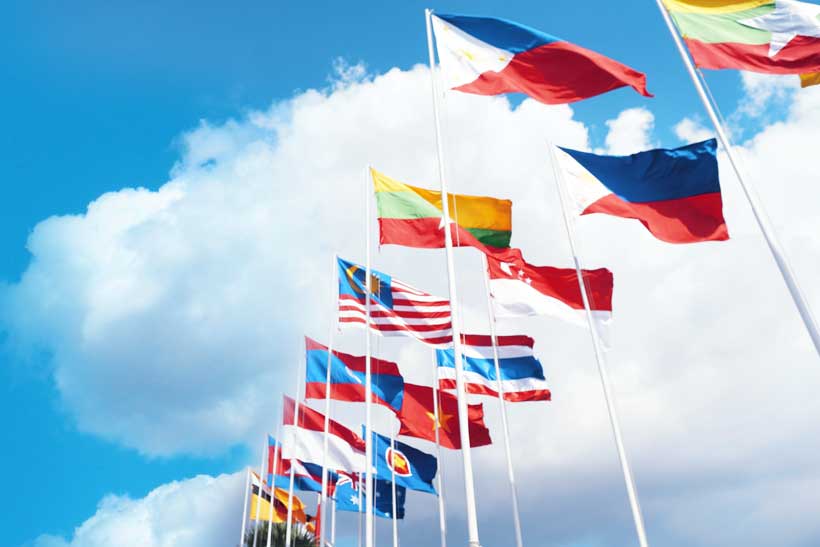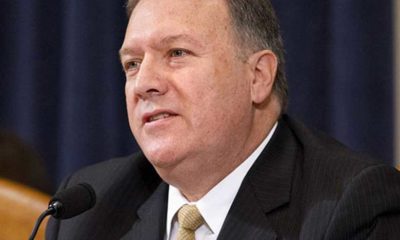Back Tran
From former enemies, the United States and Vietnam became partners when they formed a comprehensive partnership in 2013. Under the Trump administration, U.S.-Vietnam relations have made remarkable progress. As Joe Biden is set to become the 46th president of the United States, U.S. foreign policy is expected to shift significantly. What will it mean for American-Vietnamese ties?
What will change?
Vietnam’s human rights record is the most sensitive issue in its relations with the United States. Although Washington recognizes that Hanoi has made some progress, concerns remain in freedom of expression, freedom of religion, ethnic minority rights, and labor rights. Members of the U.S. Congress, especially those whose constituencies include substantial Vietnamese American populations, have put pressure on the U.S. government to criticize Vietnam’s human rights practice.
The Trump administration, however, has downplayed the promotion of human rights in its relations with Hanoi. President Trump has not raised the issue to Vietnamese leaders even though he had the opportunities to do so during his speech at the2017 APEC Summit in Da Nang, when he met President Tran Dai Quang afterwards, and during his second visit to Hanoi in 2019. The subject of human rights is also absent in the statement from the Press Secretary commemorating 25 years of diplomatic relations between the United States and Vietnam, which talks about people-to-people ties, trade and investment, legacy of war issues, military ties, and peaceful resolution of disputes.
Unlike Trump, Biden pledges to prioritize U.S. commitments in “fighting corruption, defending against authoritarianism, and advancing human rights in their own nations and abroad”. In fact, Biden was U.S. vice president when the United States paid attention to Vietnam’s human rights practice. President Barack Obama discussed human rights issues with Vietnamese leaders during his remarks to welcome President Truong Tan Sang to the White House in 2013, his meeting with General Secretary Nguyen Phu Trong at the Oval Office in 2015, and his speech to the people of Vietnam during his visit to Hanoi in 2016.
More important, Biden vows to renew U.S. democracy at home and promote it abroad. He asserts “democracy is not just the foundation of American society” but also “the wellspring of our power.”For Biden, democracy is his and his country’s value. These are the reasons to believe that the Biden administration will address Vietnam’s human rights record in its relations with Hanoi.
One of the main irritations in bilateral trade relations is U.S. trade deficit with Vietnam. The figure has grown steadily since 1997 and surpassed $20 billion since 2014. From $39.5 billion in 2018, it grew up to $55.8 billion in 2019, and despite the disruptions in trade caused by the COVID-19 pandemic, the figure reached$42.36 billion as of August 2020.
Trump has repeatedly complained about Vietnam’s large trade surplus with the United States. In February 2020, his administration removed Vietnam from the list of self-declaring developing countries that receive preferential trade benefits under the World Trade Organization. Although the Treasury’s report in January 2020 found that Vietnam exceeded the threshold for only one of the three criteria for currency devaluation—the bilateral trade deficit, the Office of the United States Trade Representative (USTR) launched another investigation into Vietnam’s alleged currency undervaluation under Section 301 in October 2020. In the latest move, the U.S. Department of Commerce announced on November 4th, 2020 that it would impose tariffs on passenger vehicles and light truck tires from Vietnam.
It is likely that the Biden administration will take a softer approach in dealing with Vietnam’s trade surplus. It will have several options, including keeping the tariff against Vietnam, filing a case at the World Trade Organization, seeking compensation through negotiation, or just simply dropping the case. It is important to note that the increase in the U.S. trade deficit with Vietnam is partly due to the U.S.-China trade war. Moreover, Biden does not believe in trade barriers and protectionism, so it is unlikely that his administration will further impose tariffs on Vietnam.
What will continue?
In the context of U.S.-China strategic competition, Vietnam has become increasingly important in U.S. foreign policy. The Trump administration identified Vietnam as an emerging economic and security partner in the 2017 U.S. National Security Strategy, the 2018 U.S. National Defense Strategy, and the 2019 Indo-Pacific Report.
China’s provocative and unilateral actions in the South China Sea have driven Vietnam closer to the United States at a remarkable pace. From former enemies, the two countries became comprehensive partners in 2013. The Trump administration has strengthened its relations with Hanoi in various aspects and promised to enhance their comprehensive partnership in a joint statement issued in 2017. Vietnam is now the 10th trading partner of the United States.
Biden makes it clear that “the United States does need to get tough with China… The most effective way to meet that challenge is to build a united front of U.S. allies and partners to confront China’s abusive behaviors”. He promises to deepen partnerships to advance shared values in a region and uphold diplomacy as U.S. primary tool of foreign policy. For him, the answer to the China threat is “more friendships, more cooperation, more alliances”. Therefore, Biden will continue to strengthen U.S. partnership with Vietnam.
During the Vanguard Bank incident in early July 2019, in which the Chinese survey ship Haiyang Dizhi 8 and its armed escorts entered Vietnam’s claimed Exclusive Economic Zone (EEZ), the Trump administration issued a series of strong statements criticizing China for its coercion and interference with Vietnam’s long-standing oil and gas activities .
In July 2020, U.S. Secretary of State Michael R. Pompeo issued a statement on U.S. position on maritime claims in the South China Sea. The statement makes it clear that “Beijing’s claims to offshore resources across most of the South China Sea are completely unlawful, as is its campaign of bullying to control them”. It also aligns the U.S. position on China’s maritime claims in the South China Sea with the 2016 Tribunal’s decision. The statement further confirms “America stands with our Southeast Asian allies and partners in protecting their sovereign rights to offshore resources, consistent with their rights and obligations under international law”.
As China’s assertive pursuit of its claims in the South China Sea threatens the freedom of the seas that is essential to U.S. national interests, Biden will continue a tough stance on China and support other claimants in the South China Sea, including Vietnam.
Under the Trump administration, U.S.-Vietnam defense ties have grown dramatically. The United States has helped Vietnam improve its law enforcement capability and maritime security. The U.S. Coast Guard transferred a Hamilton-class cutter to the Vietnam Coast Guard in May 2017 and promised to deliver a second one sometime in 2020. Washington also provided 18 “Metal Shark” patrol boats to Hanoi between 2017 and 2019. Then-U.S. Defense Secretary Jim Mattis visited Vietnam twice in 2018. The U.S. Navy has sent two aircraft carriers to Vietnam’s port—the USS Carl Vinson in March 2018 and the USS Theodore Roosevelt in March 2020. Vietnam joined the Rim of the Pacific exercise in 2018 and was invited to participate again in 2020 (but did not participate because of the COVID-19 pandemic). As concerns about China remain, it is expected that the United States under Biden will continue to strengthen defense ties with Vietnam.
The two countries are heading toward the direction for a strategic partnership. However, the pace to get there depends on how Hanoi will improve its human rights record and how the Biden administration will handle the U.S. trade deficit with Vietnam.
SOUTHEAST ASIA
The political consequences of Australian under 30’s living in shared households

Housing problems in Australia is going to be the single most issue that might change the course of political stakeholders and consequentially electoral outcomes.
Young adults are spending an increasingly longer time in the family home according to the Australian Institute of Family Studies. The study highlighted how 43% of people aged between 20-24 were living at home, compared to 36% in 1981. Furthermore, the increase is starker in the 25-29 year old’s, which has grown from 10% up to 17% over the same period.
Young people in Australia have felt the rising costs across the board which have severely impacted their ability to leave home, due to increased financial pressure. In the capital cities, the cost of housing has skyrocketed, fuelled by both market speculation and foreign investment which have driven demand. From the Australian Bureau of Statistics report in 2020, Australian property prices have shown a dramatic surge with 42.52% nominal growth and 16.36% inflation-adjusted growth between 2010-2020.
While this boom in housing prices is a fantastic equity builder for those fortunate enough to own a property, it has grave economic consequences for this generation of young working Australians looking to secure a home.
Wage growth in Australia has been extremely slow over the past 10 years, falling from 4% year-on-year (YoY) to just 2.4% in 2020. When Adjusted for inflation, it translates to only a 0.5% real wage increase.
This means young Australians have less disposable income. Less money to save for a housing deposit despite the governments first home buyer scheme. Young people are seeing a greater percentage of their take home pay going to utilities, transport and rent. On top of this is the increasing sum of money borrowed to own a home. With average household debt at 186.8% of disposable income, Australians are asking to take on some of the highest levels of household debt in the developed world.
Unlike previous generations, younger Australians are working longer hours and are in less secure working arrangements. The concessions granted to previous generations of secure, full-time work with little to no formal training are no longer available. To enter most professions now requires a formal education, which ladens prospective workers with large debts before they have even saved a penny toward owning their own home.
Consequently, there are significant political implications for a failure to act on housing affordability. The first is that with Australian wealth and equity tied to the market, any attempts by the government to devalue the price of these inflated assets would be tantamount to political suicide. With the majority of homeowners over the age of 30, and clearly the largest voting bloc, any real attempts to devalue housing would be met with retaliation at the ballot box.
This challenge isn’t isolated to Australian decision makers. Governments and politicians around the developed world are experiencing increased land and rent values. One of the main factors for young people staying home is the cost of rental properties in cities like Melbourne and Sydney.
In Europe, Berlin has experienced a similar demand increase by tenants, in a city where 85% of people rent. The provisional government there has opted to bring in rental freezes, capping the price of rent by the floor space of the property. Likewise, they have capped the rate in which landlords can legally increase the rent annually. In the city this move is wildly popular politically, with the SPD, Left and Green getting substantial support from the city’s tenants. It also emphasises that where there is the political will, there is a means for tangible political action.
There is potential for exploring of these kinds of arrangements in the heated property markets in Australia, particularly to entice young people out of the family home. If young people had confidence in stable and affordable rental agreements, then perhaps this would encourage them to leave home, as well as encourage governments at all levels in Australia to begin examining housing as a real issue effecting independence and quality of life for its young adults.
For political parties, it is in their own interests to continue driving up house prices, as it has become a key metric in the Australian interpretation of overall economic performance. If the housing market dips, the economy must be doing poorly. If housing prices rise, then the economy must be swimming along nicely.
On the flip side of this equation is these newly disenfranchised voters. Young people struggling to enter the housing market, due to the lack of political will to address the core of the issue, will inevitably be deterred from the two major parties. Australians in the age range of 18-30 are already more inclined to vote outside of the two-party system than older Australians, and a short sightedness by politicians to act now, will only damage their electability over the coming years.
SOUTHEAST ASIA
ASEAN at Crossroads: Nonaligned Movement has no alternative

As the present world order weakens, the mega confrontations have appeared more likely: On its post-Soviet revival quest, Russia becomes increasingly assertive in Euro-MED theatre and beyond. The Sino-American relations are increasingly adversarial, with escalating frictions over trade, advanced technology, human rights, and global strategic influence.
Currently, both sides – as president of the US Council of Foreign Relations Richard Haass states – ‘are developing scenarios for a possible war’. The two countries rhetoric has grown so hostile that its speed and severity is unprecedented for the post WWII period, rather belonging to the forgotten vocabulary of 1910s and 1930s. (E.g. referring to PRC as ‘Country of Kung Flu’ or to the US as ‘trigger happy nation’, calling the C-19 ‘China virus’ or ‘US Army brought pathogen’, China’s Foreign Ministry Spokesman referring to the US leadership as ‘Elements deluded by the Capitol Hill metastasis’ while the US State Secretary calls the Chinese Communist Party ‘rogue actor’, and then in return Secretary Pompeo gets proclaimed as ‘the public enemy of mankind’ – just to name but few from the long list of heavy verbal fire exchanges between the two.)
Strategic decoupling between the biggest manufacturer of American goods, China and its largest consumer, the US seems inevitable. It also appears increasingly irreversible, no matter if the change of leaders in Beijing or in Washington may or may not happen beyond 2020. This will of course trigger a global realignment and new fragilities on a default lines on land and seas, in skies, cyberspace and near outer space.
Asia’s History of Future – There is no Asian century, unless…
It was expected that by the end of 2020s, Asian economies will be larger than the rest of world’s economies combined. Of course, that was only a prediction made before C-19 and the sudden Sino-American rift. Or this was the origin of that rift? – It is still to be seen.
Past the demise of global communism, many in Asia enjoyed for decades, the best of both worlds: Cheep products from China and the military protection (or at least an implicit security guaranty) from the US, nearly for free. This especially goes to the southeaster Asia (formerly representing the mayor Asian default line), large sways of south Asia and the Far East.
The imposed re-alignment will hit them particularly hard – from a prosperous meeting point of goods, cultures and ideas to the politico-military default lines. This painful readjustment may last for decades to come. Opting for either side will not only impact economy trade and security but will also determine a health of population and societal model, too.
Unprepared and unwilling for ‘either-or’, Asia missed to build what I called for, for over a decade – a comprehensive cross-continental security setting (the pan-Asian OSCE).
The inland giga-demography, inward looking culture, obedient imitator, humble manufacturer en mas – overnight presses globally and over the sea lanes: From diligent labourer to the omnipresent global power. In the grand rapprochement of 1970s, the coastal areas of China have been identified by the west as its own industrial suburbia, and now that ‘suburbia’ has a coherent planetary plan. The shockwaves swept all in the west. The US – after its initial hangover – undergoes a painful adjustment: There is a growing consensus among all stakeholders in Washington that the strategic engagement is a failed policy with Beijing – something that obviously did not preserve the US interests. Chine is not a dangerous (trade) rival, it is a foe.
All this will now seek for the binary acclamation all over the rest of Asia. ‘Time of ‘either-with-us-or-against-us’ comes and Asia has no its third way readily prepared to offer but only alignment with one or the other – reminiscence of the pre WWI Europe with the two rigid blocks.
Beyond the Sino-world, the rest of Asia is also dominated by megademographies, brewing social mobilisations, expectations and migrations, inward looking regressive political culture (oft lacking the world-view perspectives and contributions), insecure nuclear powers, and history of rather hierarchical international conduct and architecture than of a multivector vibrant active foreign policy (bandwagoning instead of multilateralism).
All this necessitates SEA to revisit the fundamentals of and reload ASEAN, but even more to rethink and reinvigorate the best of the Non-Aligned Movement (NAM) which saved the world from the past irresponsibilities and frictions of the two confronted blocks that contested each other all over the globe for decades.
Case of the EU – ASEAN twin sister – is indicative: At present, the EU is destructive in MENA, dismissive with Russia, neuralgic on Turkey and post-Yugoslav space, obedient to China and submissive to the US. None of it serves interest of Europe on a long run.
However, realities are plain to see: the ME seeks for consolidation, Russia for cooperation, China for domination and the US for isolation. Judging the (in-)action of the current Commission, seems the EU do not grasp it well. Therefore, it losses its appeal, and tomorrow it may its substance with overall BRAINXIT. The ASEAN should desirably learn from its Twin’s, not from its own, mistake:
The Indo-Pacific, ‘The Quad’, initiative is not viable policy response to the age of global realignment. It is rather a panicking tactics of imperial retreat (seen in the past with the ‘Coalition of the Willing’) in lieu of the long-term principles shouldering the skilfully calibrated strategic and emancipatory orientation.
Indonesia and other ASEAN member states should not exhaust its entire foreign policy intellectualism on that. A host of historic south-south summit of 1956, champion of true multilateralism and founding member of NAM should not peripheriese itself and SEA by becoming a default,Maginot Line but should lead a reinvigorated Third way.
Between confrontation and bandwagoning, it is time for a true multilateralism (active and peaceful coexistence postulated by the NAM). The Movement gave for so many and for so long a security shelter and voice above weight, sense of civilisational purpose, and promising future prospect on the planetary quest fora self-realisation of mankind.
Confrontation is what you get, and cooperation is what you are fighting for. Good morning ASEAN.
SOUTHEAST ASIA
China’s strategy to divide ASEAN: An Assessment

China has always tried to make sure that ASEAN as a cohesive unit should not challenge China suzerainty in its near abroad.Therefore, China has tried to make roads into the ASEAN’s internal dialogue process and thereby create conflict of interest among the member countries whenever there has been a major summit meeting or an important dialogue related to security issue adversarial to Chinese interest. Ever since China became the ASEAN dialogue partner, it has cultivated a constituency of friendly nations, and build positive narrative with regard to Chinese propositions, and role in the ASEAN centred organisations. China’s strong support for ASEAN+3 process was a manifestation of China’s urge to influence the organisation. This has been seen particularly in the context so far as summit meetings are concerned. Whenever there is a discussion with regard to South China Sea (SCS) or talks related to Chinese dams on Mekong river within Mekong River Commission or even in ASEAN, the countries which are pro-China have tried to act as spoilers. In August 2020, China has called meeting of ASEAN diplomats to address its concerns with regard to US statements, and also give a signal of escalating conflict in SCS. US Secretary of State Mike Pompeo has earlier rejected Chinese claims in SCS, and challenged Chinese assertive posture. China criticised US and labelled it as a ‘non-regional’ country.
During the ASEAN meeting in Cambodia in the year 2012, China has tried to drive a wedge through utilising the consensus provision in ASEAN, and promoted its own interest at the cost of the unity in the organisation. The ASEAN communiqué which was not released during the Phnom Penh summit have exposed intra-ASEAN fissures. Subsequently, China tried to develop wedge between the ASEAN nations through its promise of better aid and financial assistance in developing the infrastructure for those countries which support Chinese policy and outlook. This is aimed at creating a neo-imperialist order while gaining control of major ports and infrastructure networks in Laos and Cambodia. China’s aid and assistance white papers clearly highlight the fact that how Belt and Road initiatives (BRI) projects in few countries are used as strategic lever to engage the political elite, and provide them money for their political ambitions. In the case of Laos, Cambodia, and Myanmar, China has effectively utilised the aid diplomacy and even coercion in case of any protests against Chinese projects.
China had accepted the Treaty of Amity and Cooperation (TAC) as a prerequisite for being admitted into ASEAN as a dialogue partner but subsequently when the tensions in South China Sea mounted it has proposed an agreement of good neighbourliness, technically proposing to sabotage TAC and replacing it with its own norms and structure. With regard to dialogue and consultations about South China Sea, China has proposed bilateral negotiations so as to thwart any institutional pressure which might be mounted if ASEAN remains united and passes regular joint statements against Chinese assertive posture in the region. This was visible when in July 2016 the Permanent Court of Arbitration (PCA) adjudicated against Chinese claims in South China Sea and the subsequent ministerial meetings used subdued language to criticise Chinese activities. China’s diplomats went on overdrive to know about the possible response of ASEAN members, and what would be wordings in the joint statements released after the meeting.
Even with regard to finalisation of the Code of Conduct in SCS and the deliberations which are going within ASEAN with regard to negotiating with China, the internal reports have been provided to Chinese diplomats by those countries which are extremely dependent on Chinese financial assistance and have technically subscribed to Chinese strategic game plan. It has been seen that Laos which has a communist government has become a surrogate state while in the case of Cambodia the aging political leaders want a secure future for their progeny and therefore in this context the support of China is critical for their political future- both in terms of political support and finance.
China has tried to cultivate Thailand through weapons exports at friendly prices, and provided political support and assistance to the Thai military government as it was hesitant to revert to the restoring democracy in the country. In the past it has been seen that the response of Myanmar, Thailand, Laos, and Cambodia with regard to SCS has been muted. Even lately when the Malaysia made its representation with Commission on the Limits of the Continental Shelf in December 2019 on the issue of extended continental shelf beyond 200 nm, countries like Vietnam, Philippines, Indonesia and subsequently Brunei made statements. While Vietnam, Philippines and Indonesia supported the Malaysian move but Brunei has been slightly constrained in its comment against China.
These intrinsic fissures within ASEAN have been threatening the entire rubric of the organisation and there are already China sympathisers in the group. These countries have desisted from openly criticising China and its behaviour in the South China Sea. In this regard it will be critical to note how the ASEAN Summit Communique will be drafted this year and whether there will be tensions between the pro-China members and anti-China, rational actors. It would be a difficult for Vietnam to choose sides as its interests are openly challenged by Chinese activities. Vietnam wants its economy to regain the pre COVID growth trajectory but developments in the region will have an impact on its maritime trade and commerce. Further, of Code of Conduct in SCS,if not signed sooner, than it would impact the fisheries yield because of bullying tactics by Chinese fishermen militia as well as development of offshore oil and gas fields.
 Geostrategic Media Political Commentary, Analysis, Security, Defense
Geostrategic Media Political Commentary, Analysis, Security, Defense











